Many people can recall a moment when a picture had such a profound impact on them that it changed everything. For Ian Kemp it was at the 2015 Ballarat International Foto Biennale, where a print by Melbourne-based photographer, Silvi Glattauer, caught his eye.
That print, which now hangs in Ian’s home, inspired him to travel across the world to photograph remote, arid landscapes in the Argentinian Andes. It also led to him forging a friendship with Silvi. And now it comes full circle, with Ian’s photos from that trip culminating in his own BIFB Core exhibition, Neverlasting, showing at the the Art Gallery of Ballarat’s Backspace Gallery, the same venue where Silvi’s work hung in 2015.
‘I simply chose a colour palette that came from the landscapes I saw. I was being true to that. I don’t do representational photography and the idea of oversaturating and over sharpening an image is not something that I want to pursue.’
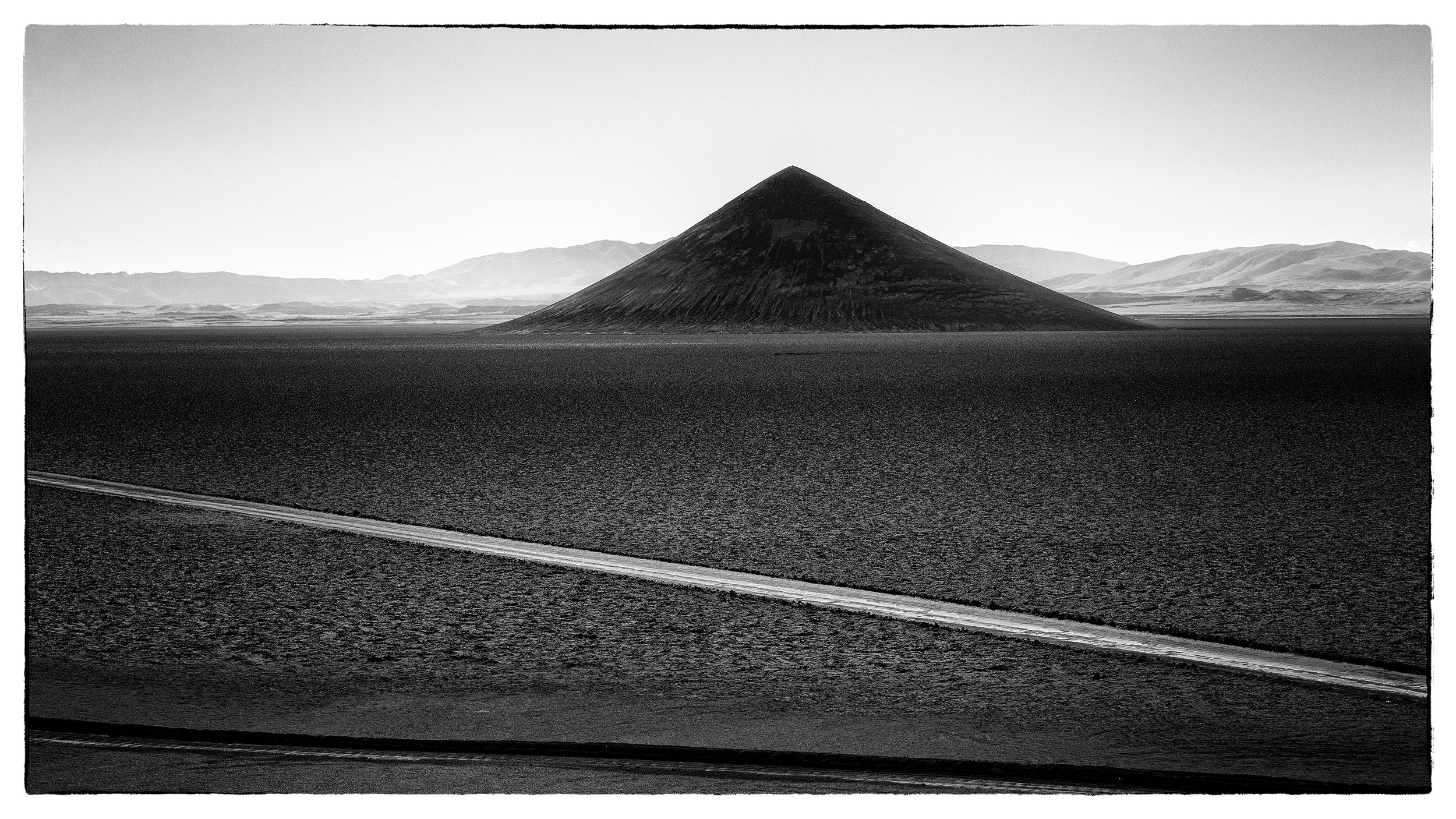
Ian, a Ballarat local, first picked up a DSLR in 2012, and by his own admission discovered photography later in life. At the time he didn’t know how to manually operate a camera, compose an image, or edit an image file. It’s hard to believe when seeing the striking images in Neverlasting, a series that aims to ‘capture a changing world where beauty is ephemeral and temporary’.
‘He uses the tonal and textural properties of etching and other traditional printing processes to imbue these works with an otherworldliness,’ the exhibition description states. ‘He highlights the beauty of line, form, and composition within the images to convey the impending change that will come with the seasons, a metaphor for the transitions within ourselves as we progress through our lives.’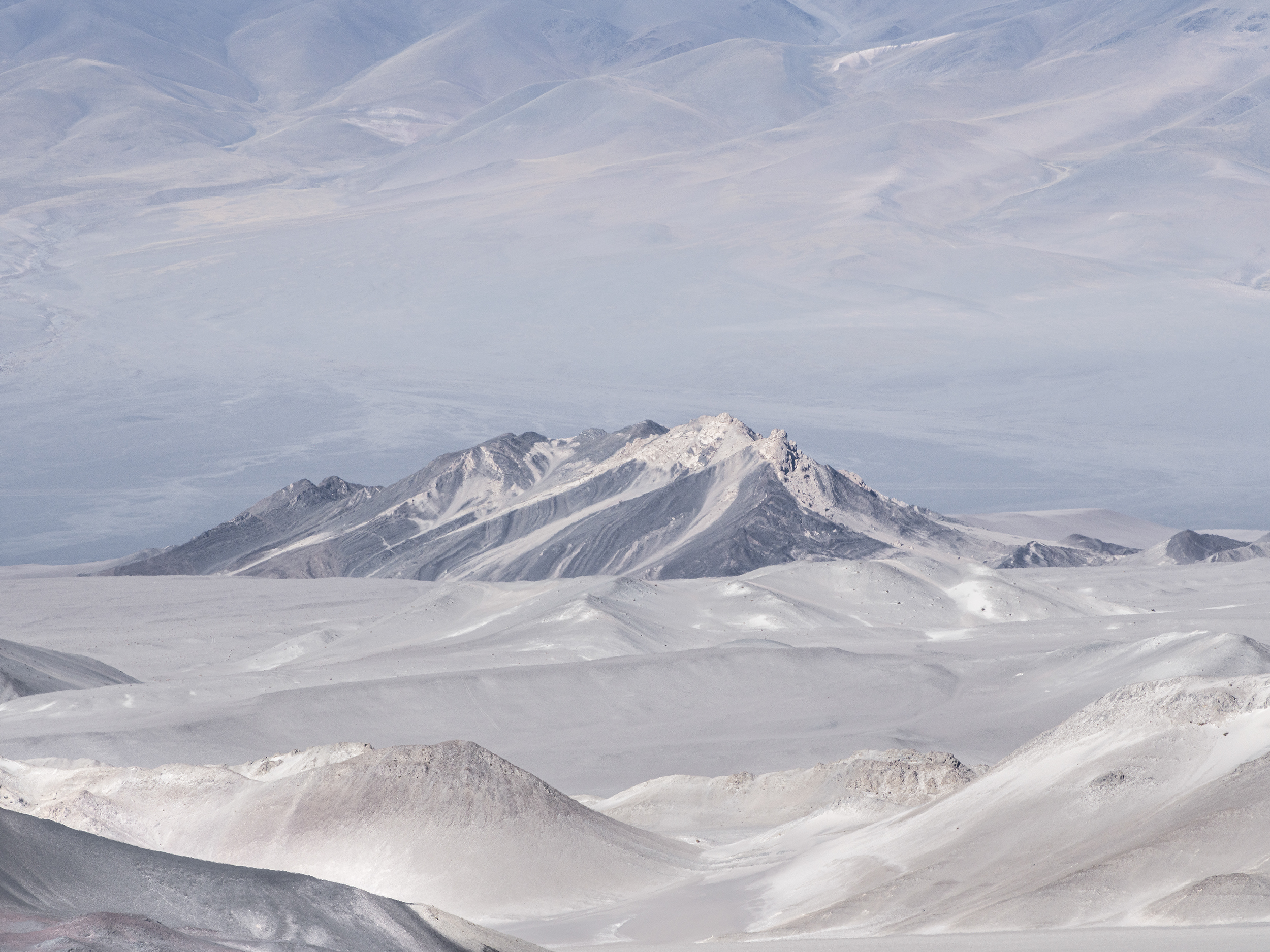
The photos are a breath of fresh air when it comes to landscape photography. The colours look real, with Ian allowing the desert textures to showcase the drama. He also prefers shooting with a longer focal length, which compresses layers tight into the image. Sometimes, less is more.
Here’s an interview with Ian:
A print by Silvi Glattauer inspired Neverlasting. What was it about Silvi’s photo that struck you?
It is not always easy to explain why a particular photograph can appeal to you, except that you know instantly when it does. The photograph still hangs in my house, and it continues to inspire. I suppose the first things I noticed about the image were related to its form, it is a large work which is totally in keeping with what I saw as the subject, the untouched beauty of nature. The colour palette was unusual, muted and yet perfectly blended. The image is in two parts: the top half shows the Andes (strong, solid, immutable), the bottom half is a shallow laguna with flamingos, (the moving, living element of nature). In this sense, the image is a strong statement about the different elements within nature, the static and the living. (Click here to read Ian’s blog post about Silvi’s image)
Not that I thought about all these things the moment I saw it, but I did look at it a long time. I decided to buy it on the spot, waited a day, and then went ahead with the purchase. I’ve never regretted it. It still brings me great joy. My friendship and work with Silvi has continued from that time.
As further background, I was in the third year of my studies at Photography Studies College when I worked for the BIFB as the volunteer coordinator, so I was always looking for interesting work. I was making that transition from understanding the technical elements of photography and becoming more interested in the aesthetic. You need to understand that I came to photography late in my life, there was no life-long hobby that morphed into something more professional, I was a complete novice beginning a journey that was bringing something entirely new into my life. Photography was new and exciting and something to be learnt. I was like a sponge.
The other impact of this image was that I decided that if I ever got the chance to go to this part of Argentina in the future then I would. Covid put an end to this opportunity in 2019 but this year offered the first opportunity and of course, I took it.
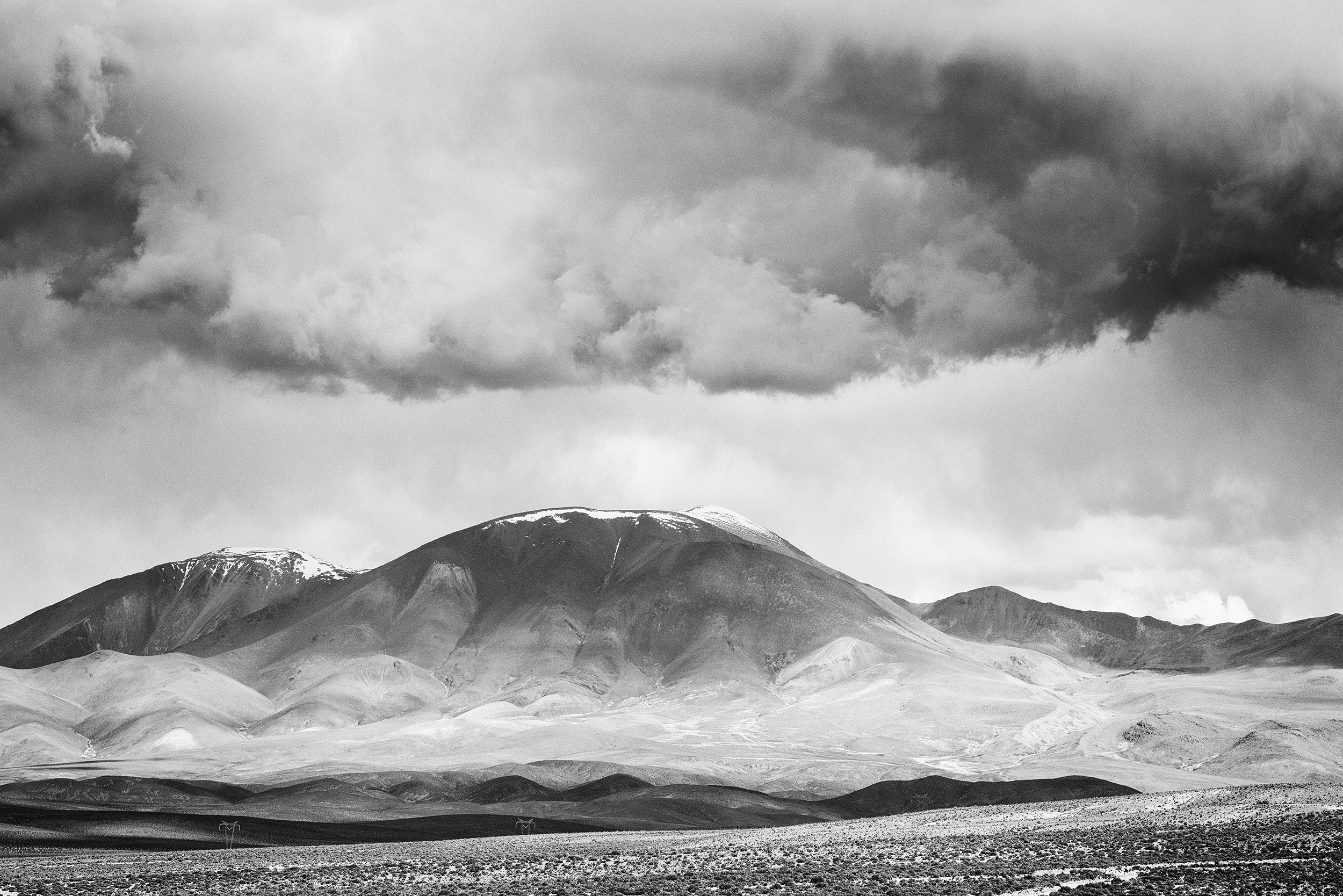
What were you looking for on your trip to Argentina for this series?
I had done a little research about the area and looked at some images from other people, but I didn’t want to see too many as I wanted to find my own way into the images. You can be influenced by what you see from other people’s work, both consciously and subconsciously. The challenge was always going to be how I would show the scale of the landscapes.
The other thing about intention is that I don’t want to pre-plan everything. I need to allow the environment to have its impact on me and the ideas about how to capture this can only come when I am in the place. How can I really know what it is like until I am there? Besides, I am not just making images about what I see, I am making them about what I feel and what I have come to understand. This is one of the things that I love about fine art photography, it is conceptual, and developing the images allows me to think more deeply about things in my life and hopefully find new insights.
The subject of much of my work is the transience of human life. Nature is often my metaphor but mostly I have used the content of flowers, or seasons, in my images, things that have a short time span, and these become reminders that in the scheme of life a human lifetime is relatively short, so let’s not waste it. In the environment of La Puna, this notion is reversed, and nature is the enduring force: just standing in this place makes you aware of how insignificant a human life can be.
The location aren’t particularly iconic – they’re not noticeable landmarks. How do you find these locations and then the compositions?
Thank you, I think that is a compliment. It does also raise an interesting question about the area. Firstly, it is not well known, and that is part of the point of being there. There are just a few landmarks, such as Cono de Arita, Salina Grande and the Llullaillaco Volcano for example, but only one of those made it into my exhibition.
I think that your comment about the landscapes lacking iconic landmarks is an interesting one. Remember, I’m creating a feeling about being in this region, about being in the relative isolation, about being away from the recognisable things that we are comfortable with. The fact that you can’t recognise a known landmark is part of the point of what I am capturing. For me that anonymity is part of the beauty of the place.
I must rely on the knowledge of Silvi Glattaeur. She has been to the area before and organised the trip from the Australian end, and Graciela Arzelan was the tour leader in Argentina who arranged the tour, transport, and accommodation. That’s how I was taken to these locations.
As for the compositions, they come either when we stopped at locations, or asked our drivers to make a photo stop or we poked our cameras out of the window and took shots on the move. Shutter priority was necessary when on the move, especially as most of the time we were on unsealed or unmade roads. We were travelling 300-400kms most days so it was unrealistic to think we could stop whenever we liked.
I thought a lot about composition. How do you capture the vast spaces? One technique I used was to crop out the sky and remove that as a visual reference when I could, or at least minimise it. Without a horizon you can increase the sense of scale of the location. And I try in my images to move your eye around the photograph, to pick up details, or changes in colour and shape and light so that influences my crops.
I find composition a rather instinctive thing, you know at the location what you want to feature and that leads you to walk in a particular direction or go to higher or lower ground so that lots of the composition occurs in camera, as it should.
I personally like the colour palette; however, the trend seems to really be in the other direction. What made you opt for either black-and-white or de-saturated?
I have not made much adjustment to the colour in the images. This is largely how the landscape appears. In post-production I play around with the look of images and then when I find one that I like I use that to select other images so that in an exhibition, apart from the subject, there is a style that unifies the collection as a body of work. In the case of the Neverlasting Exhibition this discovery came with the Salar de Arizaro image [below].
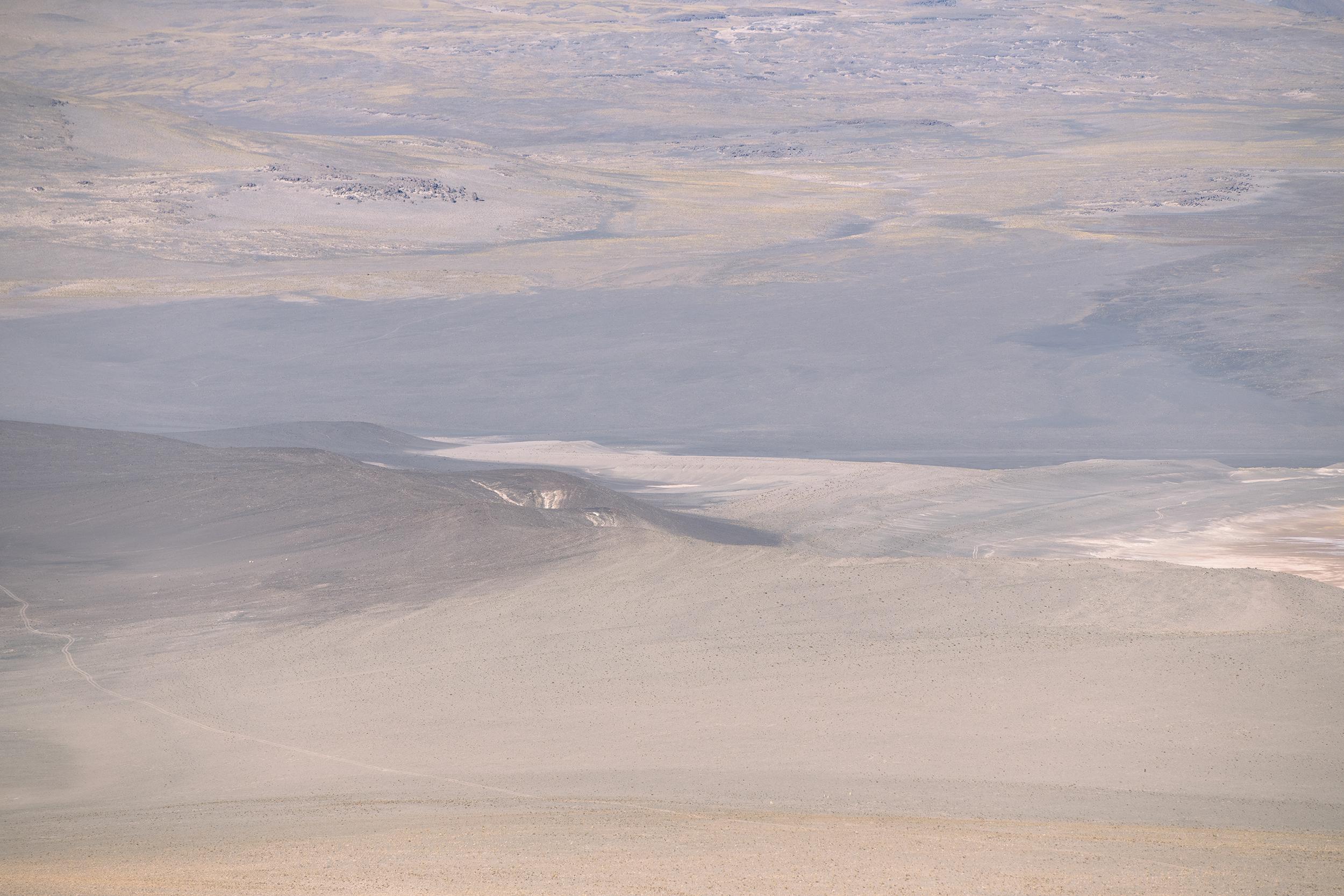
In this image the predominant colours are pastel blues, purples, yellows, pinks, and greys so the logical thing for me was to find other landscapes that had similar hues. In this manner, the colour is one of the things that unifies the images. They look like they belong together. These are the images that are in the Backspace Gallery of the Art Gallery of Ballarat.
This has consequences, it meant that I had to omit some of my favourite images. I am fortunate in that I have a place in the BIFB Open Exhibition and so I could exhibit some of them there in my Like no other place exhibition. These images are a little more dramatic, they are sharper, and the colour hues are brown, pink, purple and ochre.
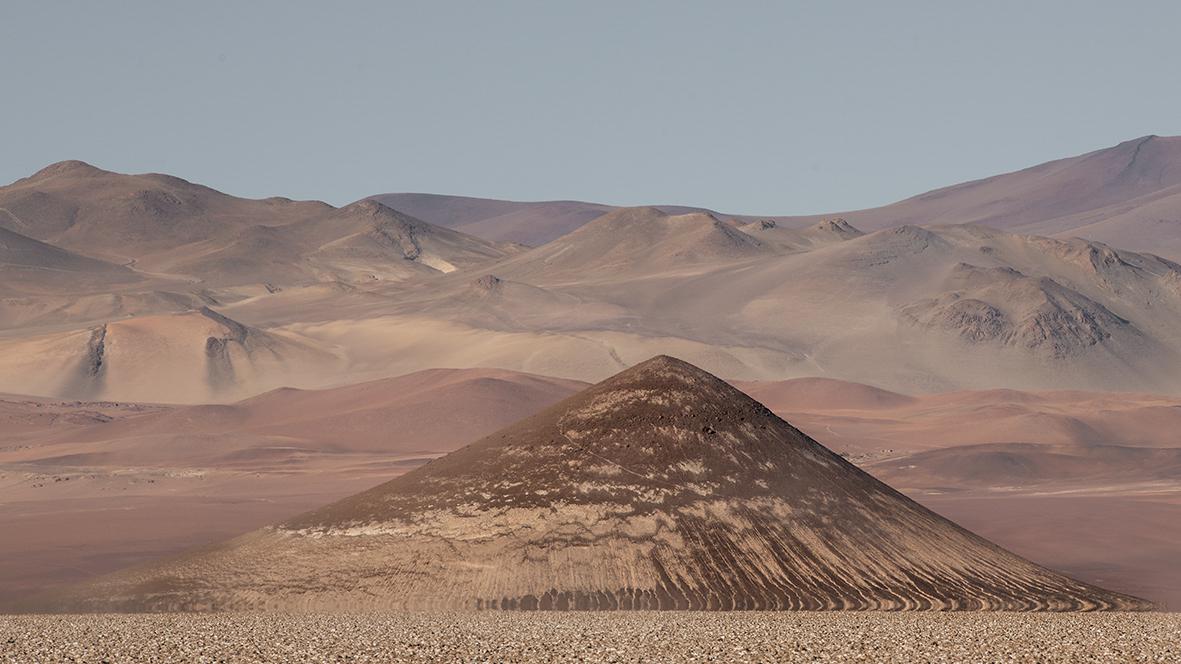
As for going against trend, that is not something I thought about. I simply chose a colour palette that came from the landscapes I saw. I was being true to that. I don’t do representational photography and the idea of oversaturating and over sharpening an image is not something that I want to pursue.
The other choice that I made was to select some images to print using photogravure. These are the black and white images in the Neverlasting Exhibition. This process allows me to create images with high contrast and drama. Taking colour out of an image means that viewers will see more of the lines and shapes within an image. You immediately know that what you are seeing is not real and something that has been created by the artist.
Instead of having a digital print made I take a photopolymer plate which is etched using a photogravure technique. I add inks to the plate and use a traditional printing press to print onto etching paper. Each print is unique. I love the textures and contrasts that this produces and the fact that it slows things down and each image is handmade. It does not come from the press of a button.
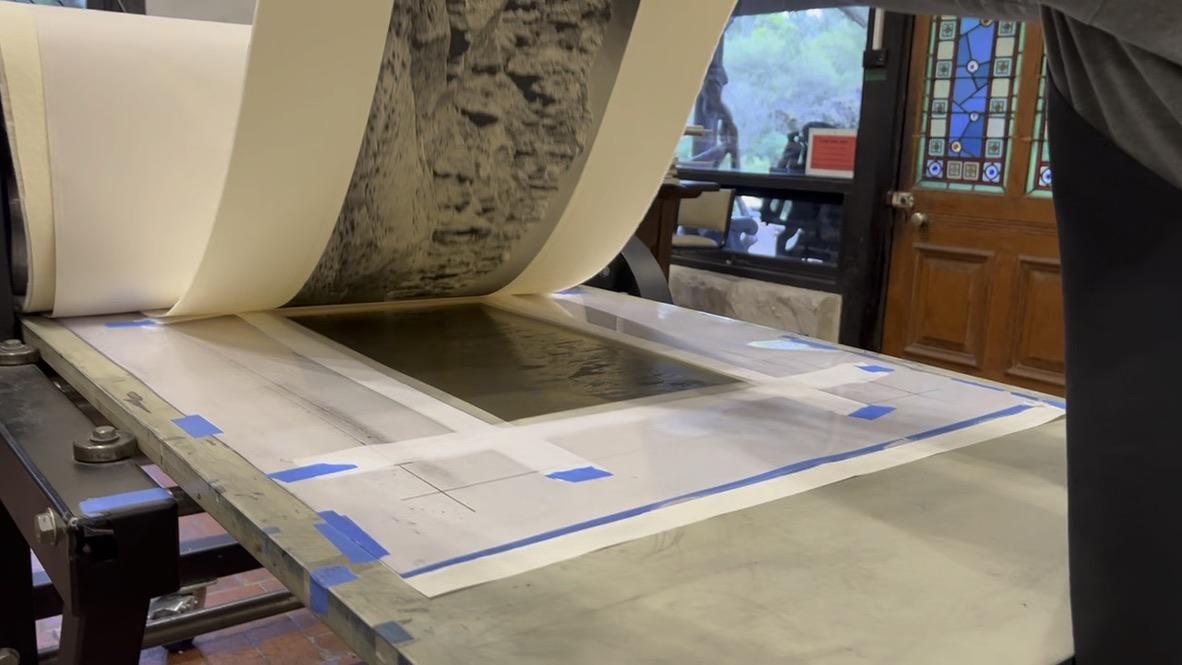
Care to share a little about how you create these photos, from the gear you use, editing, printing?
I’ve covered some of this in my previous answer. In this shoot I used my Nikon D850, I love this camera for the image quality that it produces. It is also rugged and handles bouncing around in a four-wheel drive over rough terrain. My lens was a Nikon 70-200mm which allowed me to draw the elements of the landscape closer. If I had used a wide-angle lens, then I felt the result would be all sky and too distant for the viewer to see the details of the landscape. When shooting on the move I was shooting in shutter priority, usually 1/2,500th second to ensure the details were sharp.
I do most of my editing in Adobe Lightroom, it gives me so many options for making adjustments, but I use Adobe Photoshop for some processes.
I normally print my own work up to A2 but because of the size of these images I went to Image Science as they do my large prints. I feel that you can’t print these landscapes small because what they capture is so large that a small print would diminish the impact and sense of the work. The framed images are 1150mm (W) x 780mm (H) to reflect the immensity of the landscapes.
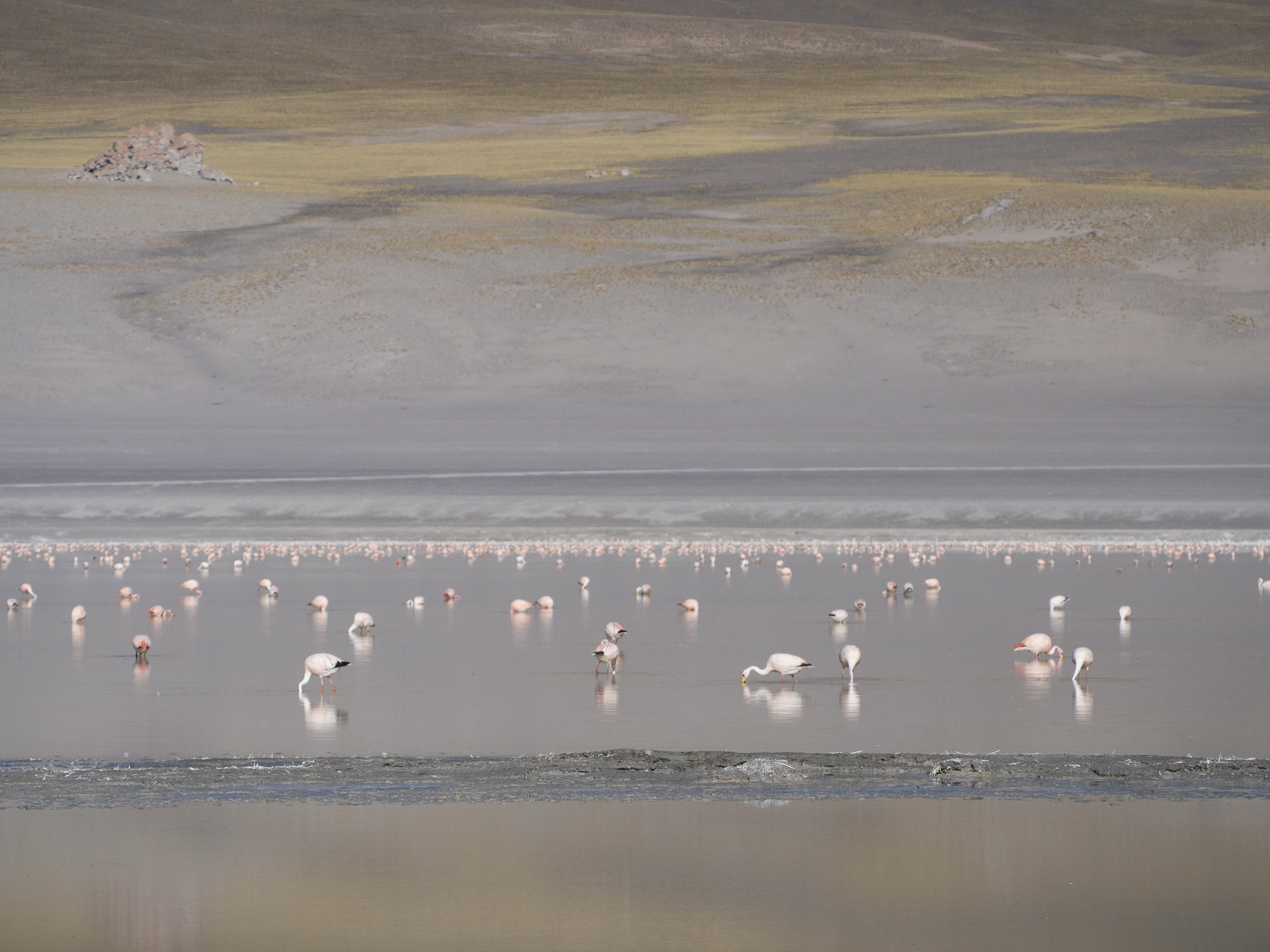
When did you first get involved with BIFB? What does the festival mean to you?
I first got involved with the BIFB in 2015. I went into the office to register for what was then known as the Fringe Exhibition (now the Open) and came out as the Volunteer Coordinator. I also had four images go into a local restaurant and sold one. For a third-year photography student who had a lifetime in education that was a big deal because at that stage of my development I had a bad case of imposter syndrome. But when someone wants to buy your work, it gives you so much confidence. I was also the Volunteer Coordinator in 2017.
The festival is important for Ballarat. It brings such a gathering of international works to one place, and everyone can go around and see such high-quality work. There will be at least 25,000 people coming to Ballarat for the Biennale. That’s a huge audience. For emerging photographers, the chance to show your work to so many people is a real thrill. So are the discussions that you have with other photographers. I first learnt about photogravure in a weekend workshop with Silvi Glattaeur in 2015 and that is now part of what I do. I learnt so much about exhibitions and photography from directors such as Jeff Moorfoot and the late Steve Marshall.
What are you excited for in this year’s program?
This year’s program is the first one directed by Vanessa Gerrans and from looking at the program I think she has brought a fresh vision to the Biennale. I have looked at the work of Platon and watched a couple of his presentations about his work, the chance to hear him speak will be wonderful. Artist talks are also important, especially when the work is different to my own style.
On a personal level, being chosen to show my work in the Backspace Gallery for the duration of the Biennale marks a progression in the exhibition of my work. I consider the images in both exhibitions to be amongst the best of what I have done. I guess I am curious as to where that might lead me in the future.
– Neverlasting is showing at the Art Gallery of Ballarat’s Backspace Gallery from August 26 – October 22. It’s part of BIFB’s Core Program.





Congratulations to Ian Kemp for this exhibition and I am sorry I won’t be able to view it in person.
How refreshing to see some natural photographs that have not been highly processed or enhanced to create an image that does not really exist.